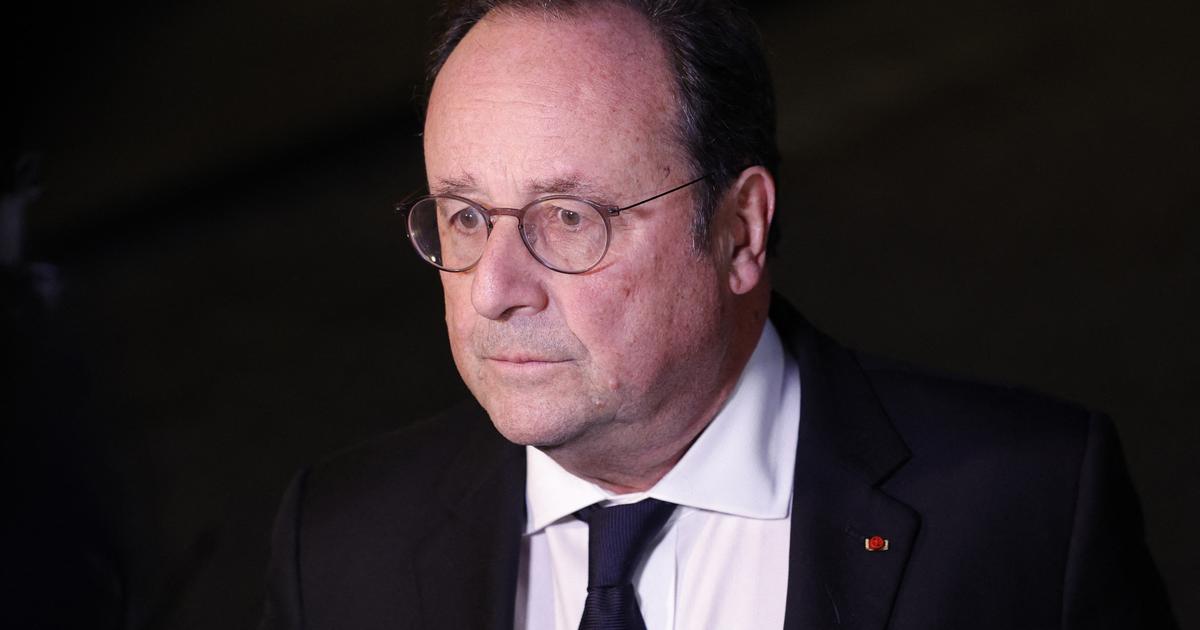The game is over, nothing is going right.
The first round of the presidential election took place this Sunday, and it was Emmanuel Macron who came out on top with 27.6% of the vote ahead of Marine Le Pen (23.4%) and Jean-Luc Mélenchon (21, 95%).
In an election marked by a strong abstention, the outgoing president therefore resisted better than expected, while the right and the left have almost disappeared from the map.
Here are eight cards to sum up this election.
1. Participation: good students stay the same
Abstention again reached an extremely high level this Sunday in the first round of the presidential election, with 25.24% of voters not having made the trip.
This is much more than in 2017 (22.2%), but we remain below the 28.4% recorded on April 21, 2002. Where were the ballot boxes most shunned?
In Overseas France first, with more than 50% abstention almost everywhere, then in Corsica, a habit for this election, and in Hauts-de-France, Paca and Grand Est (more than 26% abstentionists).
Read alsoThe map of France which shunned this first round of the presidential election
In 2017, it was the same top three, in the same order.
Occitania, New Aquitaine, and Brittany (as in 2017 for the latter) voted the best, with a participation rate of over 78%.
Between the endless Covid-19 pandemic and the war in Ukraine, the campaign struggled to take, while many also considered the ballot to be a foregone conclusion.
"The abstention was a little less strong than we could imagine", explains Paul Bacot, professor emeritus of political science at Sciences Po Lyon.
“It is the popular categories, the young, the low incomes, the low levels of diplomas who abstain”, he continues.
“The campaign was disrupted by the crisis in Ukraine and the fact that the campaign could be passed over in silence”, also explains Christophe Boutin, professor of public law at the University of Caen-Normandy and political scientist.
2. A France cut in three
As we can see quite clearly, the outgoing president is carrying out a real hold-up in the west of France… And in the west of Île-de-France.
Everywhere, except in Occitania, it takes one out of four ballots.
Behind, Marine Le Pen, in the lead in 20,000 municipalities, won over voters in a large part of northern France, in Hauts-de-France, in the Grand Est and in Burgundy.
It is also filling up on the Mediterranean rim.
Read alsoThe map of France of the vote in the first round
Jean-Luc Mélenchon, very efficient in large urban areas, achieved his best scores in Overseas, Île-de-France, Auvergne - Rhône-Alpes and Occitanie.
No need to look for light blue and pink, the PS and Les Républicains have almost disappeared from the map.
3. Macron does better than in 2017
After an express campaign limiting it to only a few trips, Emmanuel Macron therefore came first in the first round, garnering more than 9% of ballots compared to 2017. He is first in nearly 12,000 municipalities, against 7,000 in 2017. In Brittany (32.8%) and Pays de la Loire (32.3%), it came first in most municipalities.
Same thing in the west of Île-de-France, in Yvelines and in Hauts-de-Seine in particular, where Emmanuel Macron is raiding the voices.
Read alsoHow Emmanuel Macron broke into rural areas and medium-sized towns
As in 2017, Emmanuel Macron collects votes in large cities (26.9% in those with more than 100,000 inhabitants), despite failures in these same cities during local elections.
Its score in rural areas and in isolated towns is progressing, and it takes one out of four ballots in all regions of metropolitan France, except in Paca and Occitanie.
“President Macron is coming out of this first round bigger because not many presidents have seen their score increase from one election to another,” explains Christophe Boutin.
4. The RN establishes itself in the north and the east
The candidate of the National Rally comes first in nearly 20,000 municipalities, more than in 2017 (19,038 localities).
The map of the vote in favor of Marine Le Pen changes only very little: it seduces voters in a large part of northern France, in Hauts-de-France, in the Grand Est and in Burgundy.
In the end, Éric Zemmour only disturbed the results of Marine Le Pen very little here, as she is also getting ahead in Corsica, along the Mediterranean and in particular in the Var.
Read alsoFrom north to south-east, 20,000 municipalities have placed Marine Le Pen in the lead
It is also advancing its pawns in the Center region, and on the Atlantic coast and in Brittany where it has recorded a sharp increase in the number of ballots in its favour.
If Marine Le Pen breaks through in the countryside, it is more difficult in the big cities, where she only comes first in Calais (39.6%), in Dunkirk (North, 30.2%) or even in Perpignan (Pyrénées-Orientales, 27.4%).
5. Zemmour will not be the referee
The Reconquest candidate Éric Zemmour, the only real novelty in the ballot, recorded 7% of the vote, hunting on land: that of Marine Le Pen.
In Paca, the Reconquest candidate!
recorded almost 12% of the vote, its best regional score just behind Corsica (12.8%).
“Zemmour did not at all do what he hoped for,” notes Paul Bacot.
Read alsoHow Eric Zemmour hunted on the lands of Marine Le Pen
Everywhere else, it is below 10%.
Now disqualified, Marine Le Pen will be able to count on the votes of Éric Zemmour in the big cities, where he sometimes resists better than her: in Paris, for example, where the extreme right is generally weak, Éric Zemmour took 8, 2% of the votes when Marine Le Pen records 5.5% of the votes.
6. Mélenchon, city champion
Despite this third failure in the presidential election, Jean-Luc Mélenchon however improved his performance in 2017 and brought down several large cities.
Arriving first in only 3,000 municipalities, he won 31% of the vote in towns with more than 100,000 inhabitants, far ahead of his opponents.
Beyond a plebiscite in the overseas territories, it is in Île-de-France that it has its best score in mainland France, with more than 30% of the vote, a jump of more than eight points which places it first. .
Read alsoJean-Luc Mélenchon was a hit in the big cities
The Insoumis candidate is above 20% in Occitania, where the two main regional cities have voted for the candidate from France insoumise (37% in Toulouse, 40.7% in Montpellier), in Auvergne-Rhône-Apes, and also in Brittany, where he is on the heels of Emmanuel Macron in Brest and overtakes him in Rennes.
In Paca, it wins Marseille hands down, and to everyone's surprise Strasbourg, and Mulhouse in the Great East, as well as Lille in the North, where it exceeds 40%.
It is also first in Nantes, and made a breakthrough in Orléans and Tours.
And leaves only crumbs to Anne Hidalgo.
7. LR wiped off the map
The Pécresse vote took no place.
This is what emerges from our mapping of the ballot the day after the first round of the presidential election.
Traditionally strong in the Grand-Est, Sud-Est and Centre-Ouest, the government right has simply disappeared from the map.
With 4.8% of the votes cast in total, it remains according to our calculations below the 5% mark in rural areas, and is even more difficult in towns with more than 100,000 inhabitants.
Read alsoPécresse in the lead in around thirty municipalities, mapping of a shipwreck
In Île-de-France, the region over which she presides, her score is just 6.2%.
In his department of Yvelines, it barely exceeds 8%.
In Auvergne - Rhône-Alpes, where François Fillon had exceeded 20% in 2017, she only obtained 5.15% of the vote.
In the West, it is only 5.02% in Pays de la Loire, where it is sixth, where François Fillon finished 2nd.
“We go from 20%, with a François Fillon who had business, to 4 times less”, observes Christophe Boutin.
8. The Greens are pale
They had been a hit in the municipal elections of 2020. With the wind in their sails, here are the Greens violently slowed down at the end of the first round.
With 4.6% of the vote.
Yannick Jadot comes first in only 8 municipalities… In Lyon (Rhône), 2020 municipal trophy, he only collects 7.7% of the vote.
It does a little better in Bordeaux (Gironde), also under the yoke of the Greens: 8.2%.
Read alsoThe successes of ecologists in local elections erased by Yannick Jadot's score
Even in Grenoble (Isère), where EELV has been in charge since 2014, the environmental candidate cannot pass the 9% mark.
Despite everything, it records its best scores in the big cities and their outskirts: this is the case in Rennes (Ille-et-Vilaine, 10%), Nantes (Loire-Atlantique, 10%), Angers (Maine-et- Loire, 8.3%).
A “return to normal” for Christophe Boutin for whom, according to him, “the good results in the municipal elections were explained by the high abstention even though the environmental voters vote all the time”.
"Environmental concerns are integrated into all programs", also points out the specialist.















